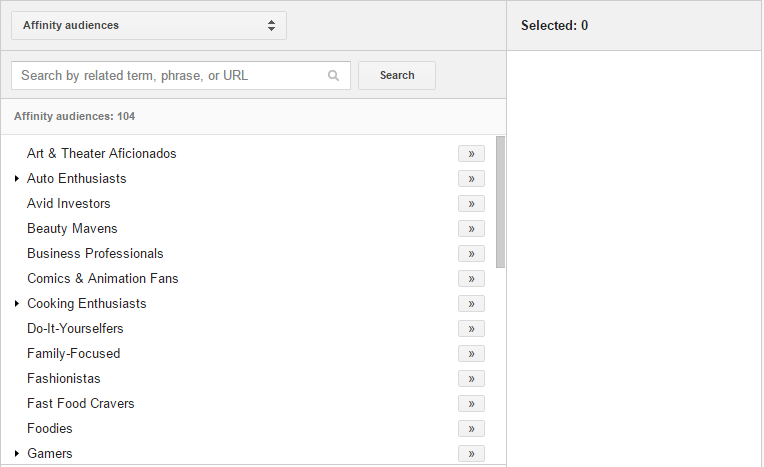In the fifth – and almost final – installment of our paid search blog series, Senior Digital Media Buyer Bill Caton shares some insights on the Google Display Network and how The frank Agency paid search team uses the networks’ highly refined targeting options to generate big returns for our clients.
What Is Display Advertising?

Google’s advertising options are divided into two different networks — the Google Search Network and the Google Display Network. The Google Search Network includes the text ads that are displayed within Google’s search engine. The Google Display Network (GDN) includes text and image ads displayed throughout an extensive network of partner sites. Like the Search Network, the GDN operates under a cost per click model.
Display advertising began when website owners began selling ad space on their website. When this practice became commonplace, some companies called “Ad Networks” began brokering available ad space to buyers. For years, The frank Agency couldn’t responsibly recommend display advertising to clients focused on anything other than branding because there weren’t enough targeting options to get a decent return on investment. This is still true of some display networks today. However, in recent years many ad networks have been working to improve the targeting options available to advertisers on their networks.
Because of this trend, we have shifted our views from keeping our clients away from display advertising to encouraging data-driven display network testing to see if it’s a profitable traffic source for our clients – and for the majority of our clients, we’ve experienced positive results.
The Power of Display Advertising

The Google Display Network offers multiple targeting options to help ensure that ads are displayed to the most relevant users. Targeting options are divided up into six categories:
Keyword — Advertisers can target individual keywords that Google matches to the content of the websites where the ads are displayed. One advantage to this targeting option is that it allows advertisers to target subject matter that is more specifically related to their product or service. For example, content talking about “fuel efficiency” might attract users who are interested in purchasing a new fuel efficient car.
Placement — Google provides the option for advertisers to hand-pick specific websites and apps to display their ads. Some websites specialize in a particular type of content that might be highly relevant to the product or service an advertiser is trying to sell. For example, a fishing lure company might want to advertise specifically on sportfishing.com.
Topic — Topic targeting allows an advertiser to target sites that fit within content categories. This type of targeting allows specific types of ads to be displayed alongside the same category type of content. An example would be travel-related ads on travel-categorized sites.

Interest — Interest targeting is just like topic targeting except that the categories are applied to data gathered on the user rather than the category of the site. Meaning, with interest targeting, the advertiser is targeting users who have been confirmed to have an interest in specific categories of content. A user who has searched for travel-related keywords or viewed travel-related content will see travel-related ads. With interest targeting, the user will see the ads targeted to their interests, even when they’re not looking at content related to what is being advertised. This is why a user who searched for airline ticket prices might later see a travel-related ad while browsing movie reviews.
Remarketing — This option allows advertisers to target ads to users who have already shown an interest in their product or service. Users can be retargeted either by email address or by a cookie placed on their computer when they visited a specific portion of the advertiser’s website. To learn more about remarketing, check out the blog post “The Basics of Retargeting,” which covers the subject in greater detail.
Demographic — Users can also be targeted by sex, age, marital status, parental status or geographical location. For example, the most effective advertising for a young adult women’s clothing line would likely only target women between the ages of 18 and 30.
Just like with keyword targeting, these targeting options can also be excluded. Excluding any of these targeting options will stop an advertiser’s ad from displaying to a user or on a website that matches the excluded target. Identifying and eliminating areas where your ads are ineffective is a great way to improve the efficiency of your ads and save on ad spend.
Placement exclusions are ALWAYS an important part of any display advertising campaign strategy. Regardless of other targeting options that an advertiser uses, it’s important to monitor the websites and apps that are displaying the ads. It’s common for ads to be displayed on websites and content that aren’t relevant to the product being advertised. Eliminating undesirable websites and apps from ad eligibility will save significant advertising funds over the lifetime of the account.
Start Advertising Effectively
Display advertising can only be effective if proper targeting strategies are implemented and tracked. As an experienced paid search agency, we focus on proper account setup and tracking to ensure that our account optimization adjustments are data-driven. Want to learn more about display advertising – and how it could be an effective component of your paid search campaigns? Contact The frank Agency today!






